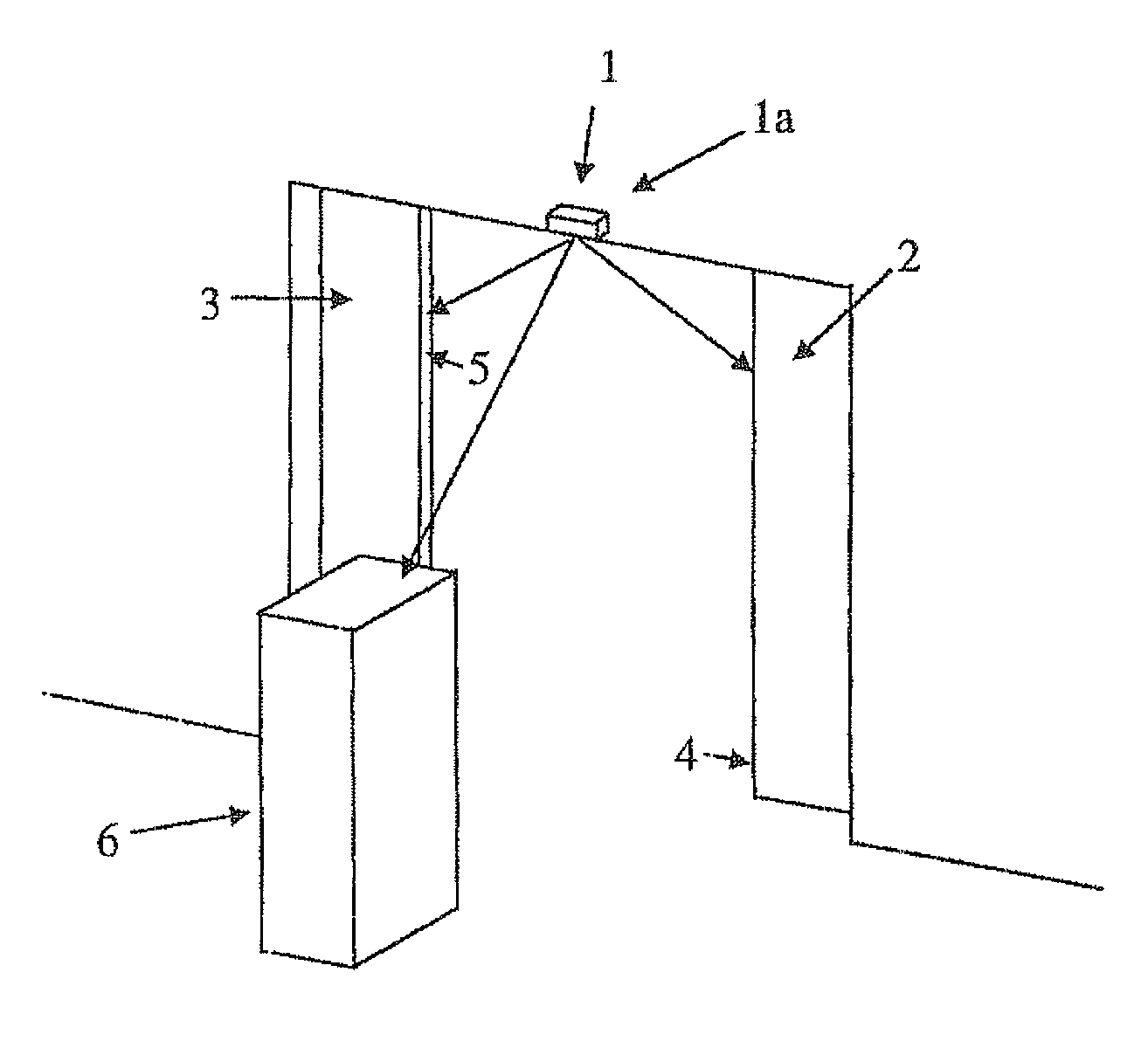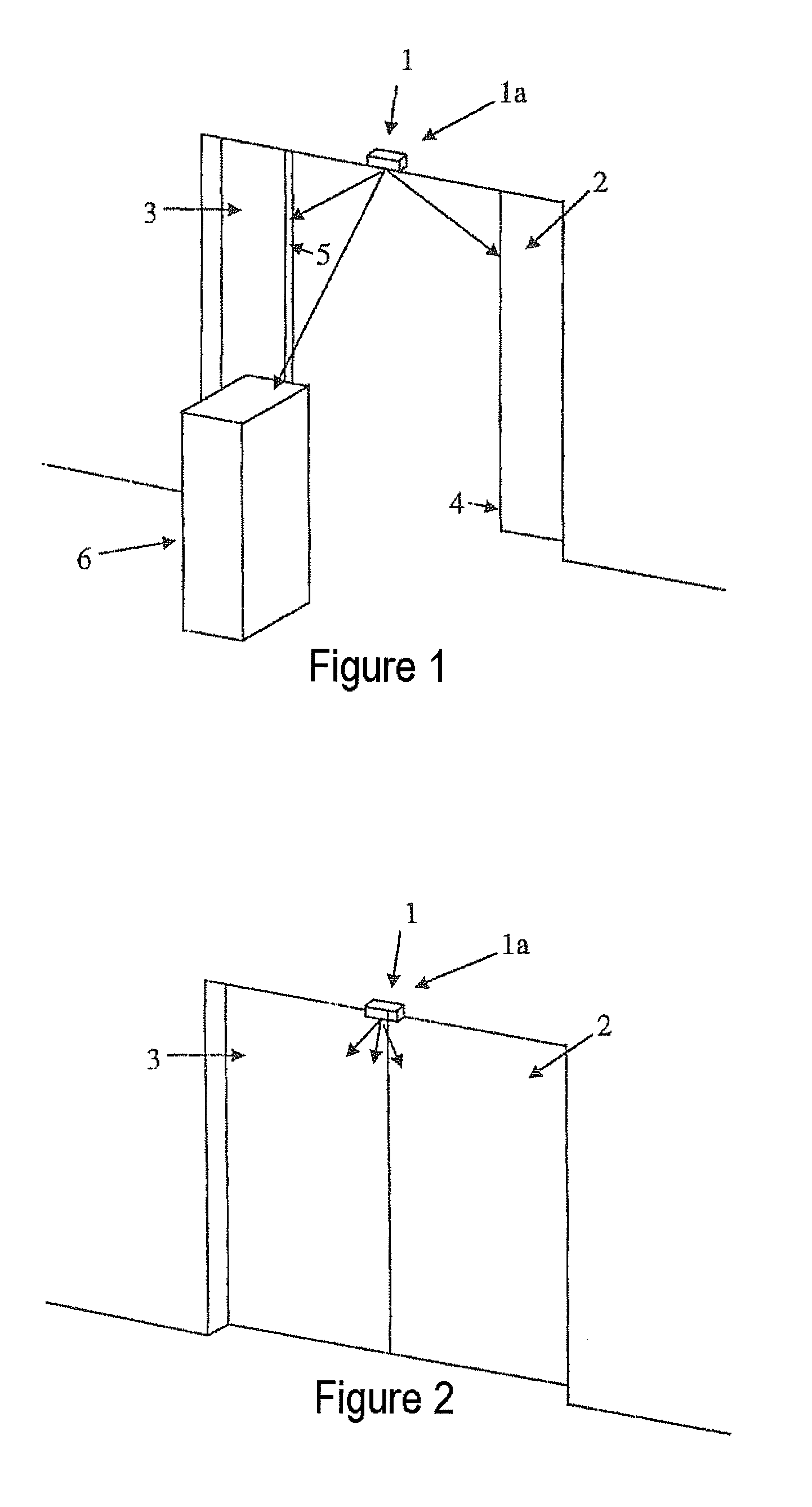Sensor device
a technology of a sensor and a spherical body, which is applied in the field of sensor devices, can solve the problems of limiting the development of heat in the case of sources, in particular light sources, and reducing the service life of the source, so as to avoid temperature-induced oscillator fluctuations
- Summary
- Abstract
- Description
- Claims
- Application Information
AI Technical Summary
Benefits of technology
Problems solved by technology
Method used
Image
Examples
Embodiment Construction
[0033]FIG. 1 shows an optical door sensor arrangement 1 on a two-leaf sliding door with an optical sensor 1a above the two door leaves. The door leaves 2, 3 are partially open and about to close. An object 6, for example a person, is moving toward the door leaves 2, 3.
[0034]The door sensor arrangement 1 detects the distance from the object 6 and, in particular, to the front edges 4, 5 of the door leaves 2, 3. Particular interest is accorded the distance of the object 6 from the front edges 4, 5 of the door leaves, in order to decide whether the closing operation is to be stopped, if appropriate.
[0035]This can be the case when the object 6 approaches the doors 2, 3 so close that a collision with the doors cannot be excluded.
[0036]The door sensor arrangement 1 operates according to the above described time of flight principle. In order to be able to undertake detection of the distances from the object 6 and the door front edges 4, 5, a light source emits light with a comparatively hig...
PUM
 Login to View More
Login to View More Abstract
Description
Claims
Application Information
 Login to View More
Login to View More - R&D
- Intellectual Property
- Life Sciences
- Materials
- Tech Scout
- Unparalleled Data Quality
- Higher Quality Content
- 60% Fewer Hallucinations
Browse by: Latest US Patents, China's latest patents, Technical Efficacy Thesaurus, Application Domain, Technology Topic, Popular Technical Reports.
© 2025 PatSnap. All rights reserved.Legal|Privacy policy|Modern Slavery Act Transparency Statement|Sitemap|About US| Contact US: help@patsnap.com


